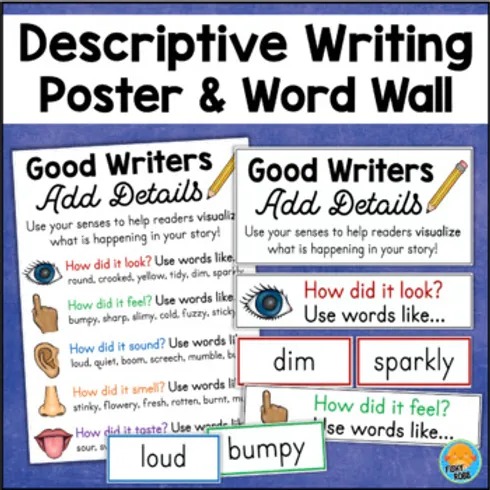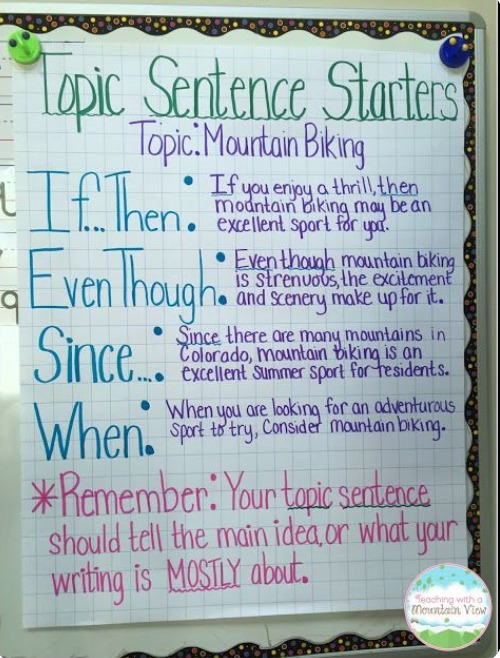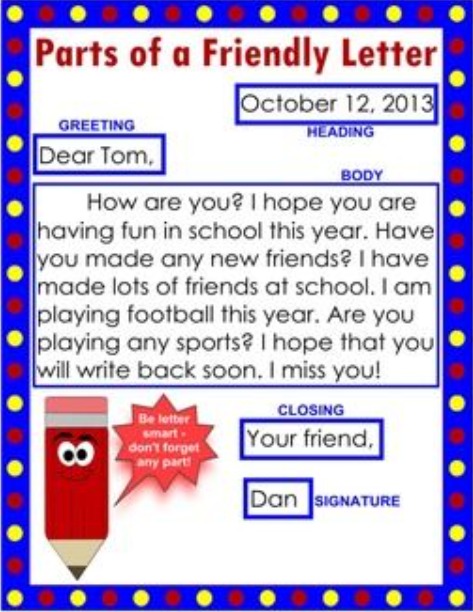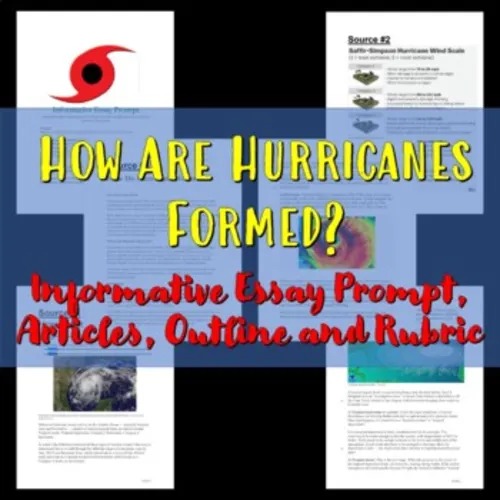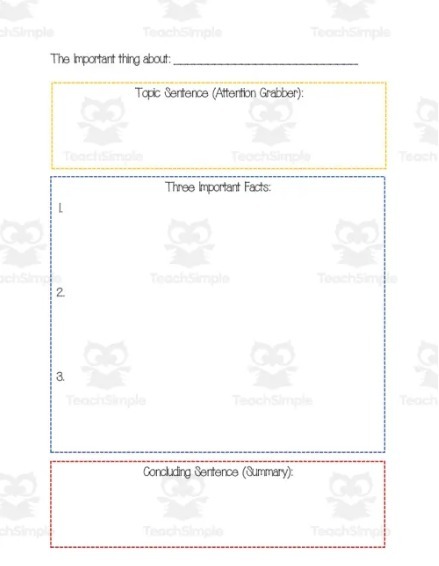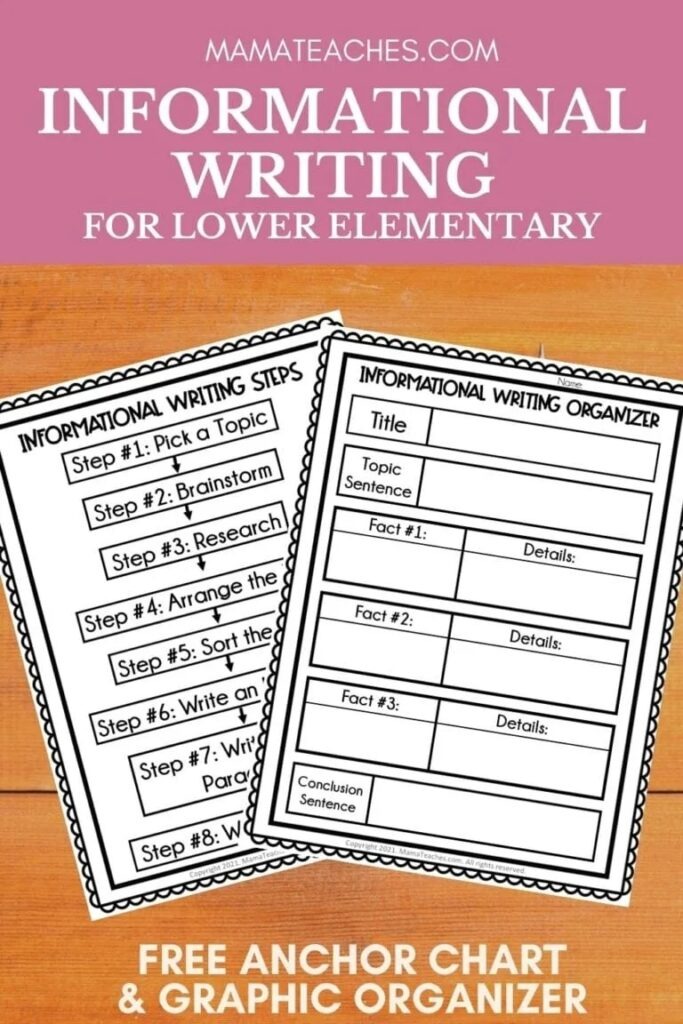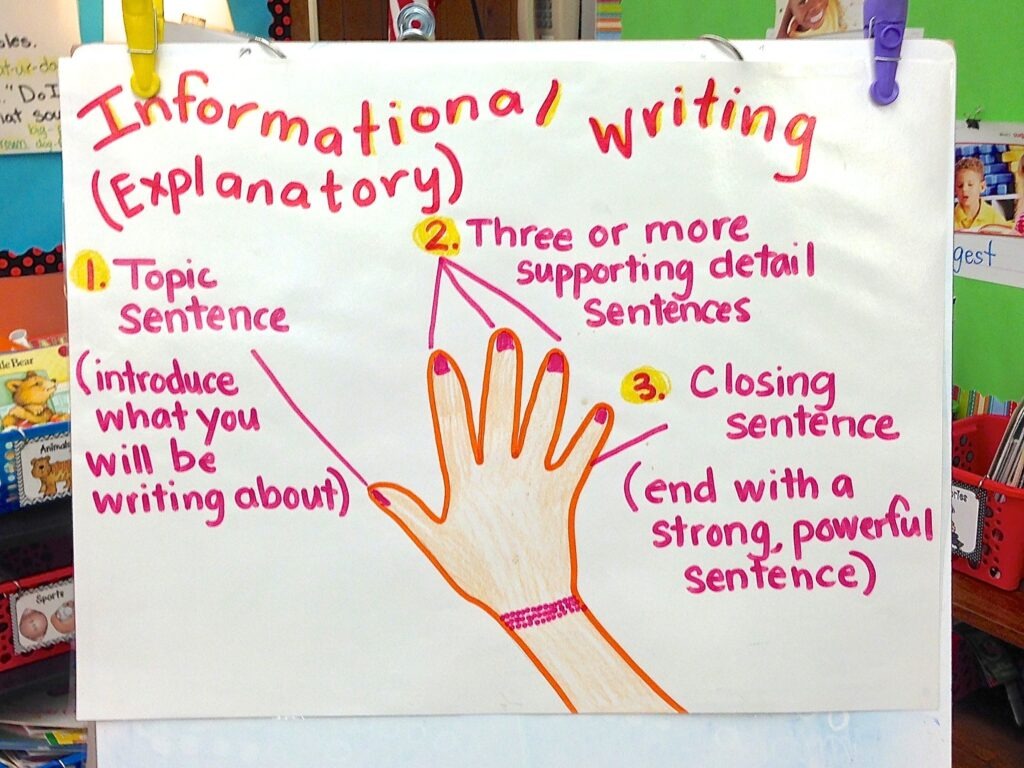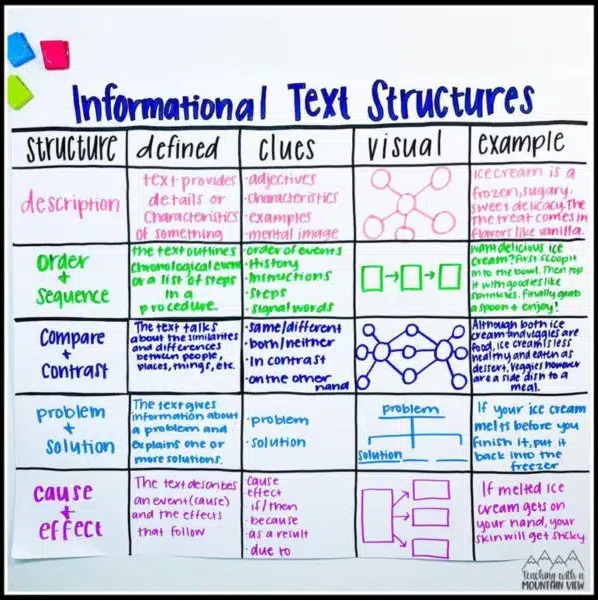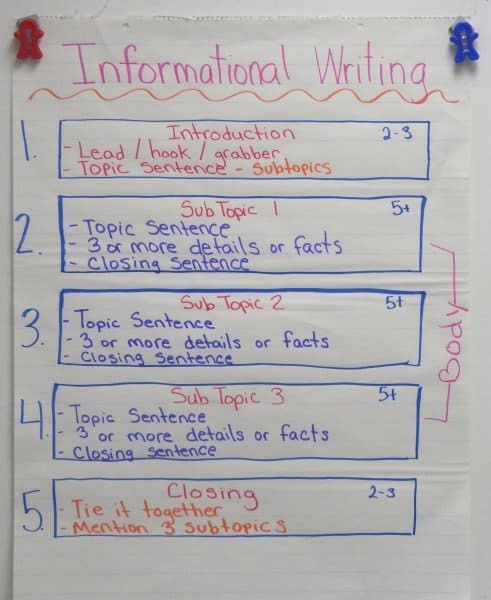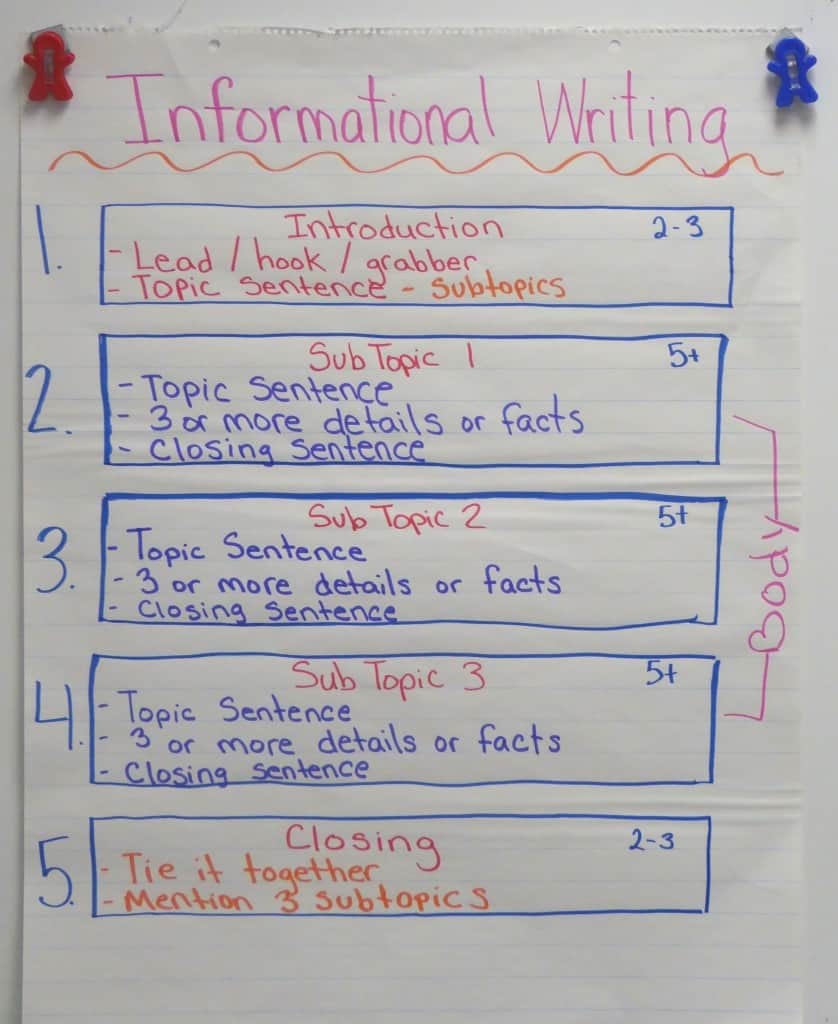Teaching writing can be challenging. Students have different learning abilities and take more or less time to take in information about writing and various styles. In the early stages, they all struggle with consistency in their writing and often overlap between writing styles and formats, which only practice and repetition can fix.
An anchor chart is a great tool to help you with that. This chart can help them visualize different writing concepts and stay on track while writing. They can use it as a reminder they can always go back to when they get stuck.
In this article, we’ll explain what types of informational writing anchor charts there are. We’ll also show you how to find top-quality anchor charts on Teach Simple.
Table of Contents
- What Is an Informational Writing Anchor Chart
- Different Types of Informational Writing Anchor Charts
- What you should look for in a good informational writing anchor chart
- Use Teach Simple To Find Informational Writing Anchor Charts Easily!
- Informational Writing Resources from TeachSimple
- Informational Writing Anchor Charts from Other Sources
- Thoughts to take away about informational writing anchor charts
What Is an Informational Writing Anchor Chart
An informational writing anchor chart is a teaching resource that helps students get a visual idea of what informational writing is. It also gives them a reference point during revision. As such, your anchor charts should be colorful and playfully designed so that students can memorize information more easily and find learning about it more fun.
You should use these charts to help your students distinguish between informational writing and other forms of writing. For example, you should show that they need to present facts and information in a specific, unbiased way, while opinion writing should focus on their opinion and feelings.
Different Types of Informational Writing Anchor Charts
Depending on your lesson objective, you can use various anchor charts to help you present the information to students. Informational writing anchor charts can focus on different writing formats, ideas to enhance the writing style, or general approaches to writing.
The most common types of writing anchor charts are:
- How-to writing anchor chart
- Adding details anchor chart
- Thesis anchor chart
- Letter format anchor chart
What you should look for in a good informational writing anchor chart
The point of informational writing is to tell the reader something. A good anchor chart must make this clear. It should be stated that the aim of informational writing is to explain something, by giving points and evidence.
The chart will thus make it clear that the content is important. It must also make sure the students know that the way the content is organized is also important. This means that a good informational writing anchor chart must have at least two elements:
- An explanation of what elements should be included in a piece of informational writing.
This can be done by using a text, or giving specific examples on the chart.
- An outline template to serve as a guide to structuring a good piece of informational writing.
A good informational writing chart must also tell the students that the technique is to write the content step-by-step. This can be demonstrated to them using an example. Even more effectively, they can do an activity where they are given a template and the must follow certain steps, or answer key questions.
How-To Writing Anchor Chart
How-to writing consists of explaining the process of something to the reader. Students should think of the steps the reader needs to take in order to complete something. A how-to writing chart should show students they have to focus on the structure to make instructions clear to readers. This chart can also be split into several charts that explain different text elements, such as introduction, body, and conclusion.
Adding Details to Writing Anchor Chart From Fishy Robb
Students tend to keep their writing minimalistic, but that’s rarely by design. An adding details anchor chart helps them enrich their writing by giving them something they can look to for more details until it becomes natural for them to start writing more colorfully by themselves.
This chart should have several segments to it, including:
- Visual description
- Emotional description
- Sounds
- Smells
- Taste
Thesis Anchor Chart From Teaching With A Mountain View
A thesis statement is the main idea statement that lets readers know what they’re going to read about without being too direct about it. A thesis anchor chart introduces various statement starters and examples in which you should use them. You can make these charts interactive by getting students to make up a sentence for each starter.
The most common thesis statement starters include:
- When
- If—Then
- Even though
- Since
Letter Format Anchor Chart From Mrs. Ferrari’s Grade 3 Class!
Writing letters has strict rules you should abide by. Every letter has a format it needs to stick to and different sentences you have to use, depending on who you’re sending the letter to and for what reason. A letter format anchor chart lets students remind themselves about different rules, such as when to use faithfully or sincerely, whether they should go formal or informal, and so on.
Use Teach Simple To Find Informational Writing Anchor Charts Easily!
Creating informational writing anchor charts can be time-consuming, especially if you’re not too familiar with the process. If you’re looking for anchor charts online, you should use a trustworthy source, such as Teach Simple.
Teach Simple offers thousands of lesson plans, anchor charts, and other materials for students from preschool to high school. The platform covers dozens of subjects and topics, including writing. The best part is that all contributors are experienced teachers who know what it takes to keep students engaged and motivated to learn.
Informational Writing Resources from TeachSimple
Informational Essay Prompt on Hurricanes and Outline Sheet with articles By Educate and Create
This is an informational resource about How are Hurricanes Formed? It is aimed at Grades 5 – 8. You can create your own anchor chart from the content of the resource. The pack includes two articles and a graph that you can use as a reference. There is an outline sheet for the structure of an expository essay, which you can use as a template for the anchor chart. Work with the students to fill this in, then they can write the essay on their own. You can also use the basic pattern as the template to write from other sources.
Trail of Tears Informative Writing Unit By Life Beyond the Gradebook
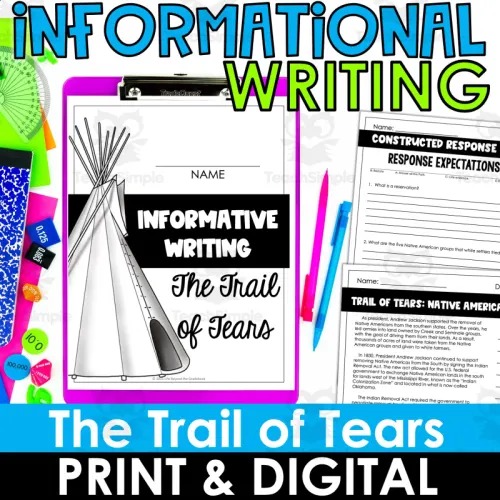
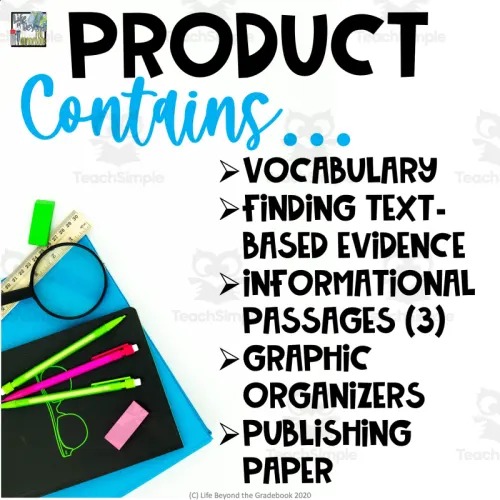
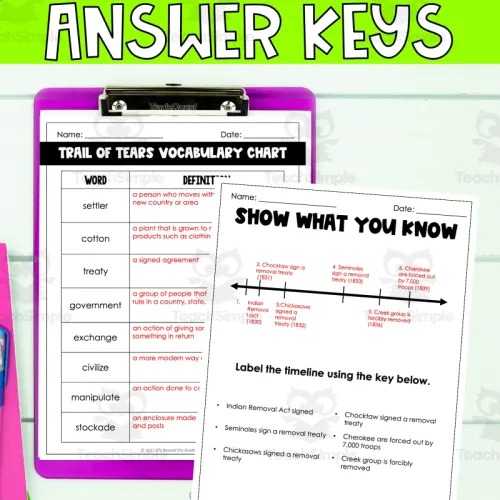
This Trail of Tears Informative Writing Unit is a whole resource pack. It is aimed at grades 3 – 6. The pack contains a poster that you can use as an anchor chart. The aim of the unit is to teach the students the process of informational writing. Students can work with the three articles that are supplied. Part of the resource is a guide to construct a response to the texts. You can also use the graphic organizer as the basis for a referential anchor chart in your class.
How To Wash A Dog By Simply Schoolgirl
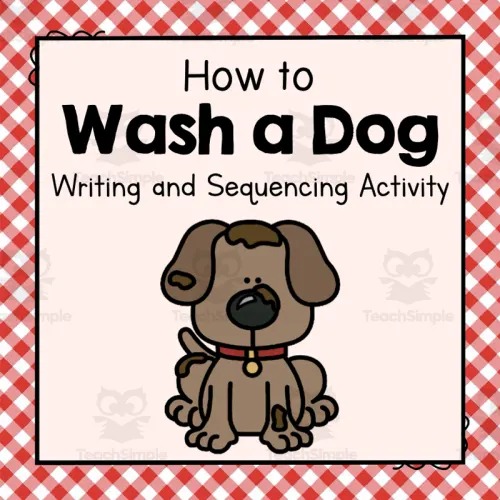
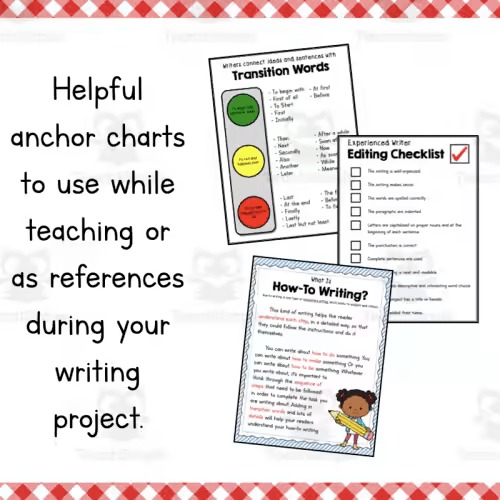
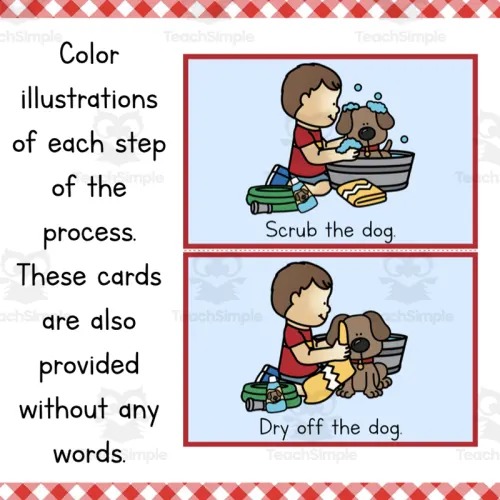
This resource guides the students How to Wash a Dog. It is aimed at Grades 1 – 3. Three anchor charts are part of the contents of the pack. You can display these in the class, or use them as the basis of individual or group work. One of the anchor charts is an editing checklist the students can apply to their writing. You can use the anchor chart on transition words to teach the students the vocabulary, or revise words they already know.
Informational Paragraph Writing Graphic Organizer By The Language of Learning
This Graphic Organizer is the perfect template to teach students to plan and structure an informational paragraph. You can also print the chart as a worksheet the students can use when you give them an exercise to write an informational piece of writing. A good way to use this template would be as part of a group work assignment. Give the students a piece of informational writing to work on in groups. Each student could be assigned a paragraph to work on, using this sheet as a guide.
Informational Writing Anchor Charts from Other Sources
Informational Writing From Mama Teaches
This chart gives important for Informative Writing. This eye-catching chart is a memorable and engaging method to introduce the idea of informational writing. The image has been used effectively to show the logic of the way an informational text develops logically.
Informational Writing From The Creative Colorful Classroom
This anchor chart on Informational Writing is great to be used in the lower grades, but can be adapted for just about any grade. What is most valuable about the chart is the use of a real idea to work with. This chart and image of a hand were used to assist students with the structure of an informational writing work.
Informational Text Structures From Teaching With A Mountain View
This anchor chart is presented in the form of a game based on Text Structured Sort. The approach is an impressive way of teaching the students about how to structure an informational text. The different columns identify different aspects of a text. There are 20 cards, each with a sentence written on it. The cards work in sets of five that can be put on the chart to create a short informational paragraph on one of the topics. The students can solve the ‘puzzle’ of filling in all the blanks. You can also simply use the basic chart as a template for the students to work on their own topics.
Informational Writing From Ashleigh’s Education Journey
This chart presents the logical structure of a piece of Informational Writing. You can take the students through the numbered steps to teach them to structure their work. Begin by leaving the blocks blank. Then, guide the students through what they need for each stage of the writing. When you have the plan on the chart like in the picture, the students can use it as a guide to write specific informational texts.
Introduce The Topic From Asleigh’s Education Journey
This is a fairly straightforward chart that aids the students in determining how to present their topic. It drives home to the pupils how well-structured informational writing is. This is also made clear and the internal structure of the writing is identified by the steps that are stated.
You can sign up for Teach Simple for free during a 30-day trial and make unlimited downloads free of charge. You’ll find thousands of informational writing anchor charts and other charts for writing.
Check out our top pick:
- Writing With a Purpose Anchor Chart
- Anchor Charts for Writing
- Trail of Tears Informative Writing Unit
- How to Wash a Dog – Writing and Sequencing Activity
- How To Mail a Letter—Writing and Sequencing Activity
- How To Make a Valentine—Writing and Sequencing Activity
- Organizing Writing Paragraphs Worksheet
- How To Carve a Pumpkin—Writing and Sequencing Activity
- How To Wash a Car—Writing and Sequencing Activity
- Types of Expository Writing Worksheet
- How To Decorate a Christmas Tree—Writing and Sequencing Activity
- Tell Us About It Expository Writing Activity
- Story Writing Organizer
- Daily Bell Ringers Writing Prompts for Winter
- Informational Paragraph Writing Graphic Organizer
- Reading and Writing in Cursive
- Comparing Expository Texts Worksheet
Thoughts to take away about informational writing anchor charts
Because informational writing needs to be precise and well-structured, anchor charts are one of the best tools to use when teaching this form. A good anchor chart will present an outline for organizing the content of the text logically and efficiently. It will also allow the students to work at writing their own informational texts while using a pattern.

